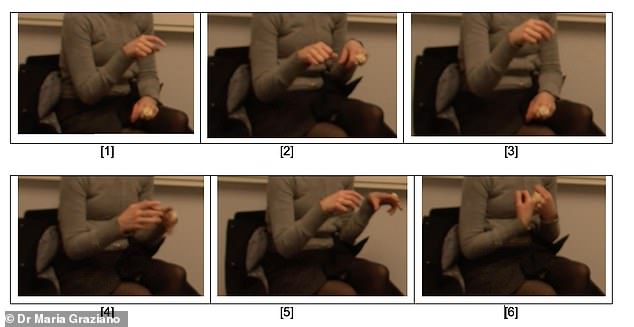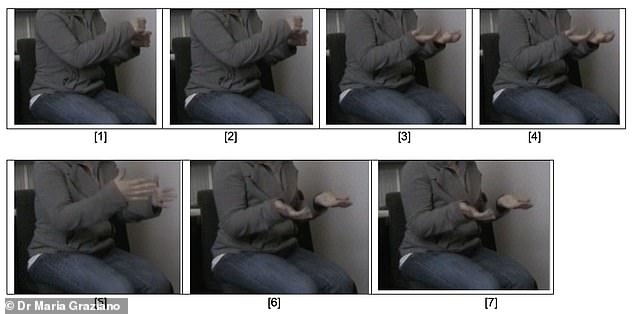- People from Italy use more than 40 hand gestures a minute while speaking
- That’s twice what an average Swede does, according to a new study
From the classic fingers pinched against thumbs to indicate frustration, bewilderment or delight to airy waves and shrugs, the Italian obsession with gestures is legendary.
Now, a study has confirmed that Italians really do talk with their hands.
Passionate people from Italy use more than 40 hand gestures a minute while speaking, the study revealed.
That’s twice what an average Swede does, according to researchers from Lund University.
And while other cultures use gestures to help illustrate parts of a story, Italians use them as a kind of running commentary on what they’re saying.

From the classic fingers pinched against thumbs to indicate frustration, bewilderment or delight to airy waves and shrugs, the Italian obsession with gestures is legendary (stock image)
Researchers at Lund University in Sweden got 12 Italians and 12 Swedes to retell the story of a 90-second clip from Pingu to a friend who had not watched the cartoon.
They found the Italians used 22 hand gestures per 100 words, compared with the 11 made by the Swedish subjects.
Previous studies have found Italians speak around 188 words a minute, which would involve 41 gestures.
Dr Maria Graziano said: ‘Italians do gesture more than Swedes, which was expected.
‘More interestingly, we demonstrated that people from different cultures use gestures differently, due to varying rhetorical styles and different ways of constructing a story.’

The study found that people in Sweden use gestures to help illustrate parts of a story. Pictured: a Swedish speaker uses gestures while describing the shaping of dough

Italians use hand gestures as a kind of running commentary on what they’re saying, the study found
In addition to gesture frequency, the researchers looked at why gestures were being used during the storytelling.
Dr Graziano said: ‘When we tell stories, we combine several kinds of information: we introduce characters and events, describe actions, and explain why.
‘We check that our listener understands what we’re saying.
‘And if we are telling a story based on cartoon, we refer to the act of watching, too.’
The research found Italians tended to use more pragmatic gestures – those that comment on the story and introduce new parts to the listener.
Swedes, meanwhile, tended to use more representational gestures, which mostly demonstarte the events and actions of the story.









